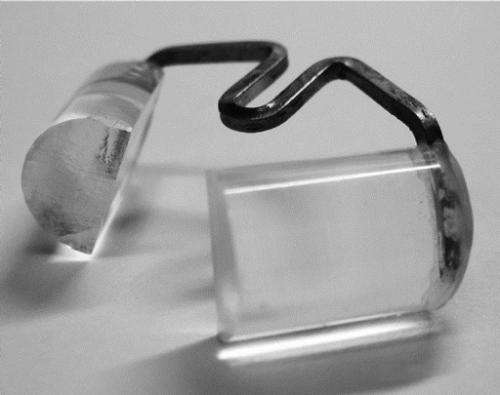Re-tuning responses in the visual cortex

New research led by Shigeru Tanaka of the University of Electro-Communications and visiting scientist at the RIKEN Brain Science Institute has shown that the responses of cells in the visual cortex can be 're-tuned' by experience.
Experiments on kittens in the 1960s showed that the primary visual cortex contains neurons that fire selectively to straight lines of specific orientations. These cells are organized into alternating columns that receive inputs from the left or right eye. The kitten experiments also showed that proper brain development is highly dependent on sensory information. Closing one eye altered the organization of the columns, so that those that should have received inputs from the closed eye were reduced in width, whereas those that received inputs from the open eye were much wider than normal.
The normal columnar organization can be restored if the closed eye is re-opened within a critical period of brain development. The effect of sensory experience on the orientation selectivity of neurons in the primary visual cortex is, however, unknown.
To investigate, Tanaka and his colleagues reared mice and fitted them with specially designed goggles through which they can only perceive vertically oriented visual stimuli, for a one-week period, between 3 and 15 weeks of age. Immediately after removing the goggles, they created a 'window' in the skull bone lying over the visual cortex to examine the cell response under the microscope.
Rearing the mice in this way had a significant effect on the properties of neurons in the primary visual cortex. The researchers found that the number of cells responding to vertical orientation increased, while the number responding to other orientation decreased. They also found that the extent of these changes depended on the age at which they fitted the animals with the goggles. Mice fitted with the goggles between 4 and 7 weeks of age had more cells that were sensitive to the experienced (vertical) orientation than those fitted later.
These findings show that there is a critical period of plasticity between 4 and 7 weeks, during which cells in the primary visual cortex are particularly sensitive to sensory experience and that plasticity persists in older animals, albeit to a lesser extent. They also suggest that plasticity in younger and older animals involves different mechanisms.
"When we put similar goggles on kittens, the age at which we started goggle rearing determined the reversibility of orientation selectivity," says Tanaka. "We would now like to clarify the differences and commonalities of the mechanisms in cats and mice."
More information: 1.Yoshida, T., Ozawa, K. & Tanaka, S. Sensitivity profile for orientation selectivity in the visual cortex of goggle-reared mice. PLoS ONE 7, e40630. www.plosone.org/article/info%3Adoi%2F10.1371%2Fjournal.pone.0040630














